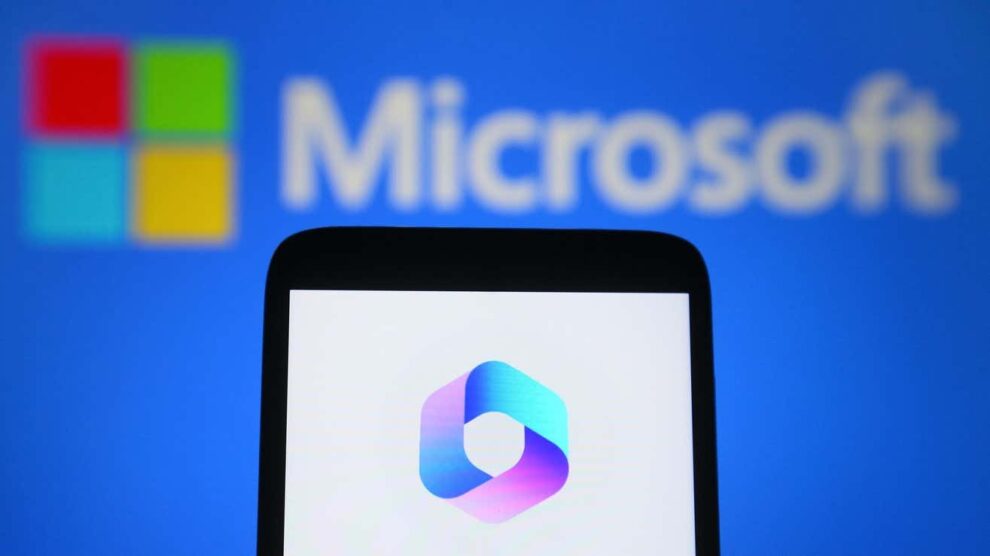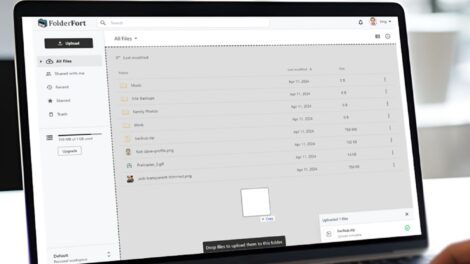Microsoft recently launched their highly anticipated AI programming tool Microsoft Copilot into general availability. Copilot provides suggestions for entire lines or blocks of code directly within the Visual Studio Code editor, aiming to significantly boost programmer productivity.
But what exactly is Copilot, how does the potentially revolutionary code-generating AI work, and what role might it play in the future of software engineering? Let’s take an in-depth look at everything you need to know about Microsoft Copilot.
What is Microsoft Copilot?
At a high level, Microsoft Copilot is an AI system that suggests potential code completions and entire code blocks in real-time as developers work in Visual Studio Code. It uses advanced machine learning techniques to analyze context and generate relevant code.
Copilot aims to serve as an AI pair programmer that suggests code in the programmer’s own style. By taking on repetitive coding tasks and helping translate intent into working code, Copilot allows developers to focus their efforts on more strategic tasks.
Microsoft positions Copilot as a new tool accelerating the inner loop of coding rather than something that fully automates coding without human involvement. The human developer remains the creative force while Copilot handles rote mechanical tasks.
How Copilot’s AI Suggests Relevant Code
Copilot produces context-relevant code suggestions by leveraging a few key machine learning techniques:
Massive Training Dataset
Copilot was trained on over 54 million public GitHub repositories representing over 10 billion lines of code in dozens of programming languages. This creates broad foundations.
Natural Language Processing
Copilot uses NLP techniques like transfer learning to analyze natural language comments and documentation around code. This helps it infer developer intent from human-readable descriptions.
Neural Networks
Copilot is powered by a neural network architecture optimized to model the complexities of code structure and the relationships between code components.
Reinforcement Learning
The system employs reinforcement learning to improve suggestions based on developer feedback and acceptance/rejection of proposals.
Combined, these AI capabilities allow Copilot to generate surprisingly relevant code from limited starting information.
Core Features and Capabilities
Copilot enables a variety of intelligent capabilities that aim to boost programmer productivity:
Code Completions
As developers type, Copilot proactively autocompletes repeating patterns, naming conventions, and rote syntax. This accelerates development velocity.
Block Suggestions
Copilot suggests entire function bodies, conditional blocks, loop structures, and more from preceding comments or function names. This handles rote coding tasks.
Bug Detection
Copilot can detect potential bugs and problems with generated code by code analyzing for incompatible data types, logical errors, deprecated syntax, and more.
Code Translation
Copilot allows translating code from one programming language to another, like JavaScript to Python. This aids porting code between platforms.
Documentation Generation
For suggested code, Copilot can auto-generate accompanying documentation summarizing function behavior, parameters, return values, and more.
Answering Code Questions
Developers can ask plain language questions about how code works, which Copilot will attempt to answer or illustrate with code examples.
These complementary capabilities aim to offload the tedious hack work from programmers to let them focus on big picture coding architecture and complex logic.
Typical Copilot Workflow Examples
To understand Copilot’s potential, let’s walk through how it enhances workflows for repetitive tasks:
Function Generation
The developer describes what they need a function to do in natural language. Copilot suggests a complete function body handling edge cases and validation.
Boilerplate Code
For common code patterns like setting up a React component, Copilot auto-generates the repetitive boilerplate code needed leaving placeholders for custom logic.
Feedback Integration
When the developer modifies Copilot’s suggestions to fix errors, the system learns from that feedback to improve future recommendations.
Rapid Prototyping
Copilot allows rapidly sketching out application flow and structure by generating all the repetitive glue code so developers can iterate on high-level logic.
Porting Code
To port code between programming languages, the developer feeds Copilot an existing codebase. Copilot translates key components into the target language.
These examples illustrate how Copilot serves as an adaptive AI assistant rather than attempting full autonomous coding. The developer remains the creative decision-maker directing Copilot’s productivity boosting powers.
Ranking Microsoft Copilot’s Benefits for Developers
Microsoft Copilot aims to provide a wide range of benefits to accelerate developers’ work:
1. Coding Time Savings
By automatically handling rote coding tasks, Copilot provides substantial time savings developers can reallocate to focus on complex logic.
**2. Reduced Cognitive Load **
Offloading basic coding to Copilot reduces mental strain, allowing developers to tackle challenging problems without draining focus.
3. Code Quality Improvements
Copilot promotes best practices by generating secure, validated, well-documented code formatted to team conventions.
4. Built-In Code Reviews
Copilot’s bug detection provides light code reviews highlighting potential quality issues to address before they create problems.
5. Onboarding Acceleration
Copilot speeds onboarding by helping new hires quickly learn codebases and ramp up through example code generation.
6. Improved Accessibility
The AI assistant makes coding more accessible by handling rote coding for developers who may face physical or cognitive disabilities.
Microsoft Copilot shows immense promise in augmented developers’ capabilities and delivering hard ROI for engineering teams through increased output and quality.
Comparing Copilot to Traditional Code Completion
Microsoft Copilot differentiates itself from traditional autocomplete code tools like IntelliSense through its intelligent capabilities:
Code Context Analysis
Copilot understands broader code structure and logic flow to generate relevant, semantic suggestions versus mechanical syntax suggestions.
Natural Language Interactivity
Copilot accepts descriptive human prompts and comments as inputs, enabling it to infer intent compared to just inserting common boilerplate code instantly.
Continuous Learning
It leverages reinforcement learning to expand its coding knowledge, unlike rigid autocomplete with no capacity to evolve or adapt to feedback.
Generative Abilities
Copilot’s advanced neural networks can generate entire new functions or components rather than just inserting predefined code snippets.
Customization
Copilot trains on a developer’s unique style and conventions to deliver personalized suggestions aligned with individual preferences.
In essence, Copilot works more like an AI pair programmer versus one-dimensional autocomplete functionality limited to mechanical shortcuts.
Ranking the Top Concerns Around Microsoft Copilot
Despite its promise, Microsoft Copilot comes with some notable concerns worth weighing:
1. Algorithmic Biases
Like all AI, Copilot risks baking in biases from imperfect training data that could lead to problematic code suggestions.
2. Over-Reliance
Developers may become overly dependent on Copilot, degrading their own skills through lack of practice.
3. Intellectual Property
Copilot’s training methodology raises IP concerns around potential copying of code without consent, but Microsoft claims sufficient protections are in place.
4. Job Displacement
Pattern completion capabilities like Copilot’s could theoretically automate portions of developer jobs long-term, but displacement remains unlikely.
5. Security Risks
Hackers could potentially exploit vulnerabilities in Copilot’s network connections and integrations to attack developers’ environments.
Microsoft acknowledges these concerns and says they are proactively working to address them through rigorous algorithm testing, usage safeguards, IP reviews, and security hardening.
Adopting Microsoft Copilot Responsibly
To mitigate risks around Copilot, developers and engineering teams should adopt the tool responsibly:
- Use Copilot as a productivity enhancer rather than a crutch or replacement for coding skills.
- Rigorously review Copilot’s suggestions rather than blindly implementing them.
- Provide bug reports and feedback to improve suggestion quality over time.
- Keep system and language knowledge current to detect anyalgorithmic inaccuracies.
- Advocate for transparency from Microsoft around algorithm training, testing, and security.
- Push for inclusion of diverse voices in Copilot’s continued training.
Through responsible usage, teams can maximize Copilot’s massive upside while proactively addressing the open challenges and risks.
The Outlook for Microsoft Copilot’s Future
As Copilot continues evolving, we can expect Microsoft to expand its capabilities in powerful ways:
- Support for more programming languages beyond the initial set
- Integration into more developer tooling beyond VSCode
- Mobile developer support through iOS and Android apps
- Enhanced natural language understanding of developer intent
- Frontend web development support for generating HTML, CSS, etc.
- Greater personalization based on individual developer style
- Tighter version control integration when committing auto-generated code
- Security scanning that flags potential code vulnerabilities
- Testing automation to generate code unit tests
- Translation between spoken words and programmatic code via voice
Microsoft is clearly playing the long game with Copilot as a foundational developer tool. Its evolution could help accelerate software innovation and democratize coding in far-reaching ways.
Are We Entering the Next Stage of the Developer Evolution?
Stepping back, Microsoft Copilot represents a pivotal juncture in the evolution of software development. Just as compilers, databases, testing, and other innovations reshaped coding, Copilot points to an AI-assisted future.
In 5 years’ time, Copilot-inspired features could become standard baked into all core developer toolchains. Working alongside AI may soon become the norm, not the exception.
Of course, realization depends on perfecting the technology and addressing the open challenges responsibly. But Microsoft’s ambitions clearly aim to profoundly expand what developers can achieve.
The seeds are planted for the next great leap forward in democratizing code creation. Microsoft Copilot kicks off the journey, serving as the catalyst that accelerates human and artificial intelligence collectively opening new possibilities.
Frequently Asked Questions About Microsoft Copilot
Here are answers to some common questions about Microsoft Copilot:
How much does Copilot cost?
Copilot is currently free for general use with limited functionality, but a paid Pro version with full capabilities is coming in 2023. Pricing is TBD.
What languages does Copilot support?
Initially, Copilot supports Python, JavaScript, TypeScript, React, HTML, CSS, C#, Java, C++, Objective-C. More languages will be added over time.
Can Copilot be used offline?
No, Copilot requires an internet connection to generate suggestions powered by its cloud models. Offline usage is not supported.
How accurate are Copilot’s suggestions?
Quality can vary, so always thoroughly review Copilot’s code before implementing it. Accuracy improves over time through user feedback.
Does Copilot replace the need to know coding?
No, Copilot is an assistive tool. Developers still need strong coding skills to properly validate and integrate its suggestions.
Can Copilot lead to developer job loss?
Unlikely – its capabilities center more on automation of repetitive tasks rather than autonomous development. Creativity remains essential.
How does Copilot handle privacy and security?
Microsoft claims data shared with Copilot is anonymized and encrypted to protect privacy. Its security protocols are continuously vetted.
Microsoft Copilot aims to augment, not replace, human ingenuity through AI and machine learning. When used responsibly, it promises to help accelerate software innovation.










Add Comment